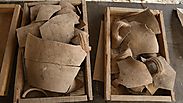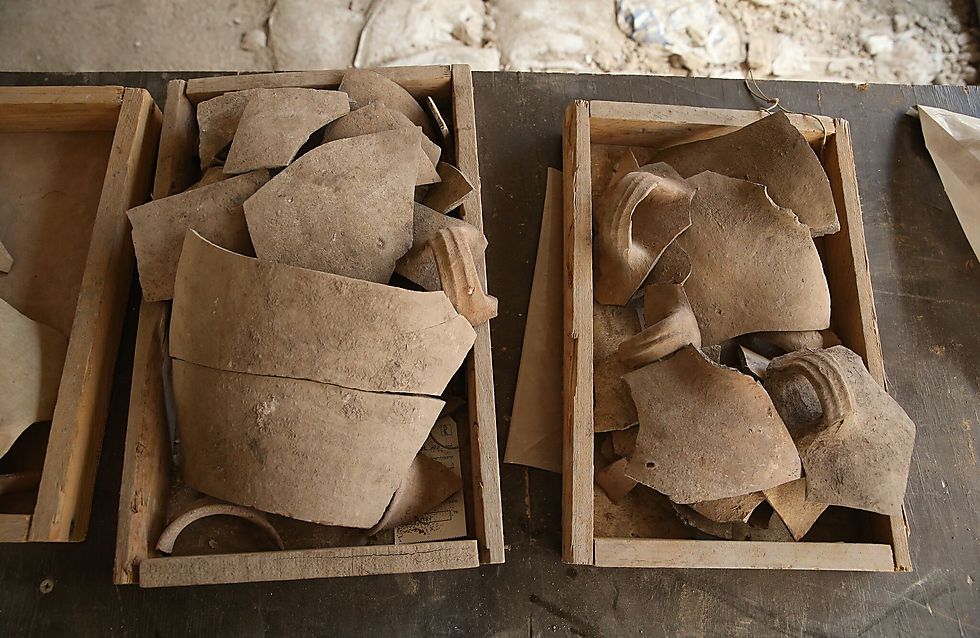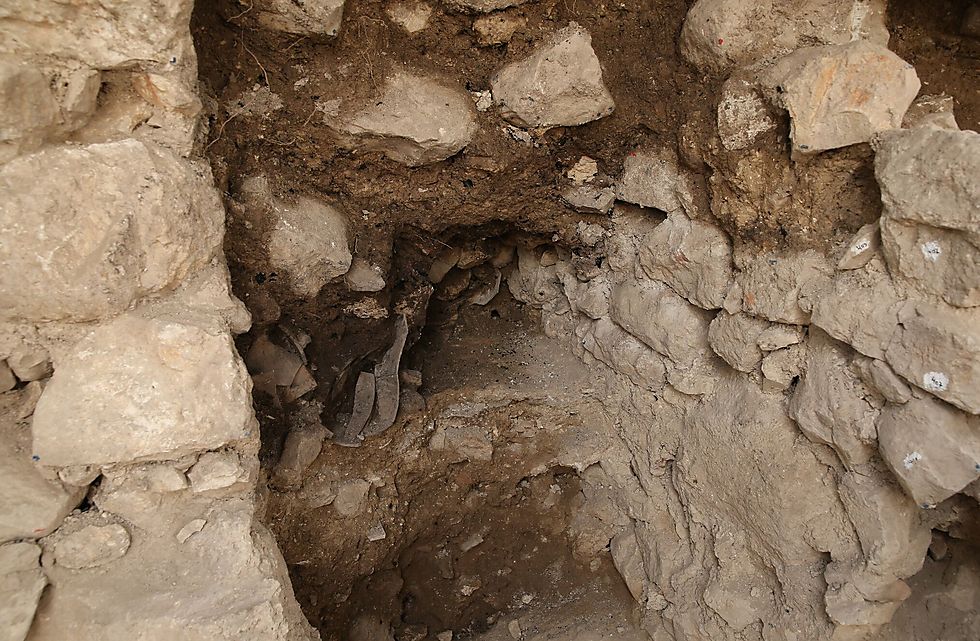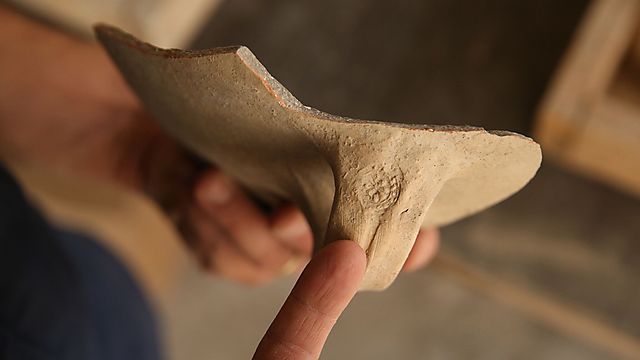
Ancient pottery unearthed in Jerusalem
Photo: Eliyahu Yanai, Courtesy of the City of David Archive

Evidence of destruction of ancient Jerusalem unveiled in capital
More than 2,500 years after the Babylonians razed Jerusalem, evidence of the destruction found: residential buildings covered with collapsed stone and charred and remains are discovered alongside pottery vessels and rare artifacts, hinting at the city's past day-to-day life.
Evidence of the destruction of First Temple era Jerusalem in 586 BCE at the hands of the Babylonians has recently been unearthed in the City of David, adjacent to the Old City, the Israel Antiquities Authority announced Wednesday.
The Antiquities Authority said that excavations conducted in recent months concentrated on the eastern slope of the City of David.

Ancient pottery unearthed in Jerusalem (Photo: Eliyahu Yanai, Courtesy of the City of David Archive)
“The findings show that Jerusalem had extended beyond the line of the city wall before its destruction,” said Ortal Chalaf and Dr. Joe Uziel, Israel Antiquities Authority excavation directors. “The row of structures exposed in the excavations is located outside beyond the city wall that would have constituted the eastern border of the city during this period,” they added.

The building where the vases were found (Photo: Eliyahu Yanai, Courtesy of the City of David Archive)
Dating back more than 2,500 years, the findings include charred wood, grape seeds, pottery, fish scales and bones, and unique, rare artifacts. Archaeologists said the findings depict the affluence and character of Jerusalem, capital of the Judean Kingdom, and were “mesmerizing proof of the city’s demise at the hands of the Babylonians.”
The wealth of the Judean kingdom’s capital is manifest in ornamental artifacts found in the dig, including a small ivory statue of a woman with her hair worn in the Egyptian style. Archaeologists said the quality of carving attests to the high level of skill of the artists.
Among the most important findings of the dig were dozens of storage jars for grains and liquids, several of which had stamped handles. Several of the seals discovered depict a rosette of a six petalled rose.
“These seals are characteristic of the end of the First Temple period and were used for the administrative system that developed towards the end of the Judean dynasty,” say Chalaf and Uziel. “Classifying objects facilitated controlling, overseeing, collecting, marketing and storing crop yields. The rosette, in essence, replaced the ‘intended for the king’ seal used in the earlier administrative system.”
















